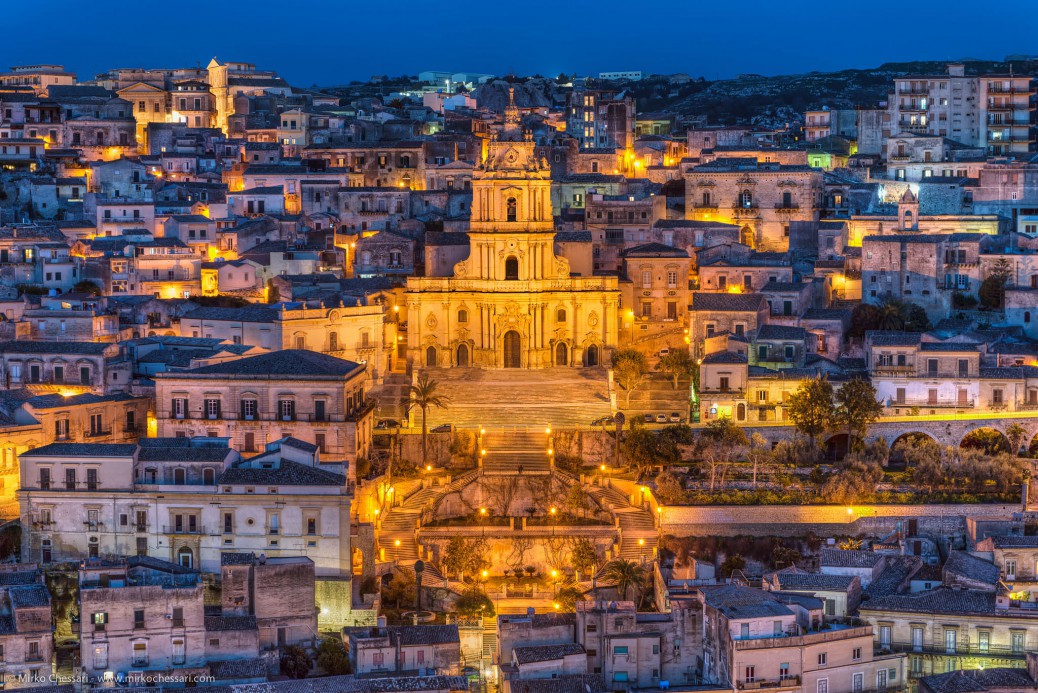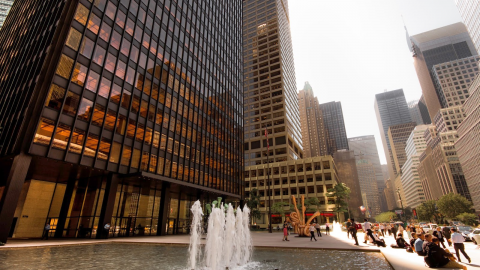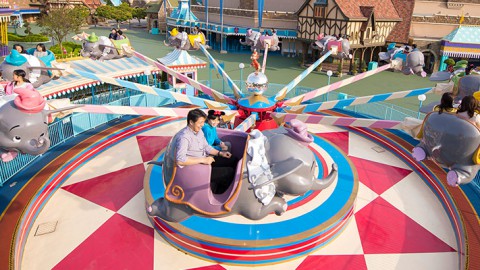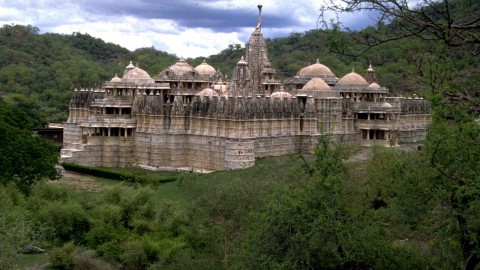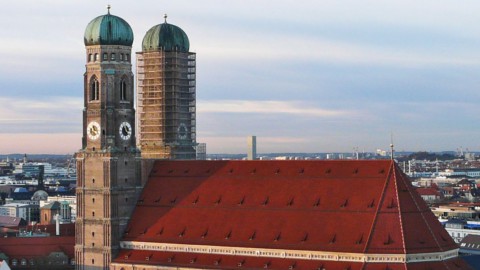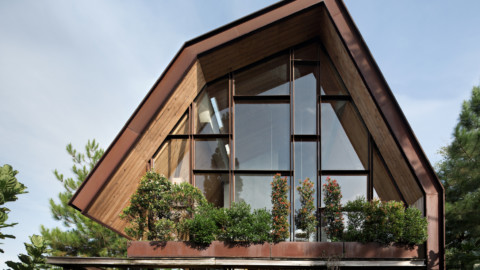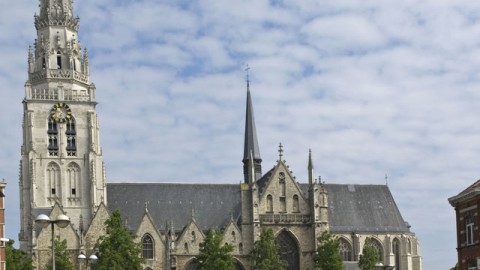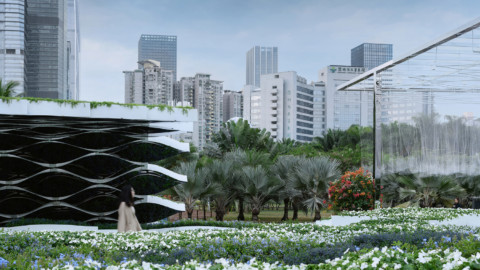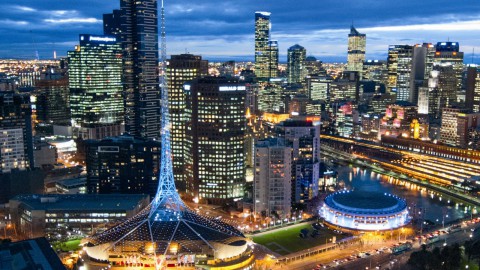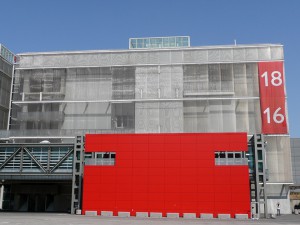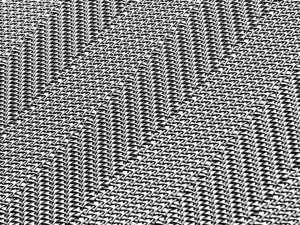Duomo di San Giorgio (Ragusa)
聖喬治大教堂(拉古薩)

From: https://courses.bowdoin.edu/italian-3008-spring-2016/sicily/modican-vistas/
Facade
State Italy Italy
Region Sicily Sicily
Location Ragusa-Stemma.png Ragusa
Roman Catholic rite Christian religion
Owner Giorgio
Diocese of Ragusa
Architect Rosario Gagliardi
Architectural style Barocco siciliano, neoclassico
Inizio costruzione 1739
Completamento 1775 circa
正面
國家意大利意大利
地區西西里島西西里島
位置Ragusa-Stemma.png拉古薩
羅馬天主教儀式基督教
老闆喬治
教區拉古薩
建築師Rosario Gagliardi
建築風格西西里巴洛克式,新古典主義
1739年開始建設
大約完成1775年
The cathedral of San Giorgio is the mother church of the city of Modica, in the Libero municipal consortium of Ragusa, and is included in the UNESCO World Heritage List.
It is often indicated and marked as a symbolic monument of the Sicilian Baroque, of which it represents the most scenographic and monumental architecture. The art historian Maurizio Fagiolo dell’Arco declared that this Church “could be inserted between the seven wonders of the baroque world”.
The building is the final result of the six / eighteenth century reconstruction, which occurred following the disastrous earthquakes that struck Modica in 1542, in 1613 and in 1693 (the most serious one, see the Val di Noto earthquake); slight damage caused the earthquakes in the Iblea area that occurred during the eighteenth century and in 1848.
聖喬治大教堂是莫迪卡市的母教堂,位於拉古薩的Libero市政財團,被列入聯合國教科文組織世界遺產名錄。
它經常被指示並標記為西西里巴洛克風格的象徵性紀念碑,它代表了最具景觀和紀念性的建築。 藝術史學家Maurizio Fagiolo dell’Arco宣稱,這座教堂“可以插入巴洛克世界七大奇蹟之間”。
該建築是六/十八世紀重建的最終結果,發生在1542年,1613年和1693年(最嚴重的一次,見Val di Noto地震)的莫迪卡發生的災難性地震之後。 在十八世紀和1848年發生的Iblea地區的地震造成了輕微的破壞。
history
The first official document that certifies the presence of a church dedicated to St. George in the city of Modica is a papal bull of 1150, issued by Pope Eugene III, with whom the Ecclesia S. Giorgi de Mohac was placed, together with the sister St. John the Evangelist already present in the upper part of the city, under the protection of the Monastery of Miletus, in Calabria. But probably its first edifice would have been directly commissioned by Count Ruggero d’Altavilla, starting from the Norman conquest of Sicily, around 1090. San Giorgio was erected in Collegiata with a bull of Urban VIII of 6 November 1630.
The seventeenth-century structure was designed by architect Frate Marcello da Palermo, of the Reformed Minor of San Francesco di Modica, with the laying of the foundation stone in 1643. The master builder of the San Giorgio factory, then promoted in 1649 to the master builder of the town of Modica, it was Carlo D’Amico, also originally from Palermo. Misterious is the name of the author of the eighteenth-century rearrangement project of the façade, even if indications derived from careful studies lead one to think, also in consideration of the long duration of the works, to a continuous reworking by the most valuable architects of the eighteenth century, between which Rosario Gagliardi for the initial project, Francesco Paolo Labisi da Noto from 1761 onwards (as regards the construction of the II and III order, but the direction of the works was removed, and entrusted to capimastri), finally Carmelo Cultraro limited to the crowning of the III order thanks to the construction of a spire, between 1841 and 1842. The Gagliardi and the Làbisi, although acting in the exquisitely Sicilian field, were updated professionals and good connoisseurs of the baroque and late Italian and European baroque style of the era . In particular, the Làbisi, as regards the original solution of the facade-tower, seems to have been inspired by the Dresden Cathedral, completed in 1753 on the design of the Italian Gaetano Chiaveri.
The works for the restructuring and remodeling of the first order of the seventeenth-century façade, which had resisted the strong shocks of the 1693 earthquake, with the juxtaposition mode, or the scrapping of small portions for refitting above, began in 1702 and was completed in 1738, maintaining the old style. The offerings for the restorations or rebuilding from the new were very fruitful, from the Modica faithful, to which a great contribution of the Commune was added, and the generous donation of King Philip IV, who renounced in favor of the church the annual contribution that the County poured at the Royal Heritage of Spain; in a few months, a total of 5,350 onze were collected, several millions of euros present as expendable value. Of the façade before the earthquake, that built second
or the model of Frate Marcello, if only one piece was damaged, an arch of a door, rebuilt between 1702 and 1704 according to the ancient plant, at the cost of just 300 onze, including the rebuilding of a piece of roof of the central nave, and of the bell tower. The delivery of the works was solemnly celebrated in the city on February 9, 1738 with a procession in the presence of all the religious authorities (the bishop of Syracuse, Monsignor Matteo Trigona at the head), civilians and soldiers of the time. Then a long pause between 1738 and 1760.
歷史
這證明一個專門聖喬治在城市莫迪卡的教堂的存在的第一個正式文件是1150教皇公牛,教皇尤金三發行,由此使氣泡神召德第Giorgi的Mohac放置,連同姊妹公司聖約翰福音傳教士已經出現在城市的上部,在卡拉布里亞的米利都修道院的保護下。但也許是他第一個建築物將直接由伯爵羅傑·德HAUTEVILLE委託,從西西里島的諾曼征服,圍繞1090聖喬治始建於高校與1630年11月6日的城市第八公牛。
十七世紀的設施是由來自巴勒莫,莫迪卡的聖弗朗西斯的改革小建築師馬賽羅弗萊爾設計,在1643年聖喬治工廠的建築大師奠基石鋪設,然後在1649年晉升為incegniero的工頭莫迪卡鎮,也是最初來自巴勒莫的Carlo D’Amico。神秘的是外觀的十八世紀的移民工程的名字,雖然從細緻的研究經驗使我們相信,即使考慮工作時間長,實施再繼續工作最有價值的十八世紀的建築師島之間這羅薩里奧加格里亞蒂初始項目,保羅·拉比西能登從1761年起(對於第二和第三級的建設,但他被帶到了工作的方向而去,並給工頭)終於卡梅隆Cultraro限制三階帶尖頂的建築,1841和1842年的加格里亞蒂和Labisi之間的加冕,而在西西里精美面積作用,進行了更新,並深諳巴洛克式和巴洛克晚期的意大利和歐洲的專業時代。 Labisi特別是,考慮到外觀塔的原來的解決方案,似乎已經由德累斯頓大教堂,於1753年竣工,意大利項目加塔諾·奇弗里啟發。
在十七世紀的門面,它經受住了1693年地震的劇烈震盪的秩序的整治和改造工作,以並列的方式,或sfabbricare小部分被重建了,他們開始在1702年和1738年完成,保持舊的風格。炫耀是祭,為恢復或劃傷重拍,由modicani忠實,向其中添加了本市的一大貢獻,國王菲利普四世的慷慨捐贈,誰贊成教會放棄年度貢獻縣倒在西班牙皇家遺產;在幾個月內,共收集了5,350個onze,數百萬歐元作為消耗價值。在之前的地震的外觀,所述一個按照弗萊爾馬塞羅模型構造,如果他們lesionò只有一個片內,門中的一個,1702和1704分別對應之間重建了古植物,僅在300的Onze的成本,包括這種花費重建中央教堂中殿的一個屋頂和鍾樓。這項工作的交付隆重慶祝在城市的1738年2月9日以遊行到所有宗教當局的存在(雪城主教,蒙斯。利瑪竇特里戈納中的鉛),民用和軍用的時代。然後是1738年到1760年之間的長時間停頓。
The first order of the current façade was therefore already complete in 1760, when the task was given to the Làbisi of a project that, starting from a plastic strengthening of the supporting structure of the first order, allowed the latter to support the weight of the II and III, foreseen by the project itself, maintaining a stylistic uniformity, despite the bold design of raising a tower façade. Labisi’s work was extremely important, as the architect netino succeeded in drawing the II and III orders in a perfectly harmonic manner compared to the late-baroque style with which the first order of the façade was reconstructed, reformulated a few decades earlier on the drawings or Gagliardi (of which we have no testimony, but who worked in Modica, for example, in 1714, for the Jesuit façade of the present church dedicated to Santa Maria del Soccorso) or another architect (they are payments [10], earlier to 1761, by the canon Francesco Gaetano Basile, treasurer of San Giorgio, in favor of Vincenzo Sinatra, also of Noto, a pupil of Gagliardi) who was reiterated to his dictates. The third order was completed in 1780 having foreseen in 1777 the positioning of the largest bells in the special cell, and of the mechanical clock in its quadrant. The bells and the clock, completed the III order, were moved in 1777 to the upper floor, leaving empty, as we see them now, the bell cell of the second order and the relative quadrant of the clock. The new-style reconstruction of the facade of the Duomo, 78 years after the beginning of the works, could be considered almost completed, but the crowning of the 3rd order and the final spire with the cross were missing. To this he provides, with his own project, the Ragusan Carmelo Cultraro, assisted by the factory masters Primo Muccio and Gaudenzio Lauretta, from 1841 to 1842.
In 1841 (act of March 26) it was in fact assigned to the “master builder” Carmelo Cultraro to realize, within a year and five months, a spire on which to affix the iron cross, to complete the original project of the mother church. «… the sudetti Cultraro, Muccio and Lauretta … by virtue of this authentic act … they promise, and they are obliged to … finish the third order, and make the fourth, the fifth, and the sixth order. ..with all the necessary factories in this work, well experimented with good dough, most of which factories will have to be covered with pieces of soft limestone … »The client at the Cultraro, very detailed, meticulously lists the sculptures, the forms , the friezes, the decorations, of which to equip the cusp of the church. In 1842 this project was entirely completed, as a stone cartouche affixed to the crown surmounting the third order.
因此,當前立面的第一個順序在1760年已經完成,當時任務被分配給一個項目的Làbisi,從第一個訂單結構的塑料加強開始,允許後者支持儘管採用了大膽的塔式立面設計,但是項目本身預見的II和III級的重量保持了風格的一致性。 Labisi的工作是非常重要的,因為能登架構師能夠畫出II和III才能成為較後期的巴洛克風格在其正面的第一順序是重建完美的調和,重新幾十年前圖紙或加格里亞蒂(圖紙其中我們沒有證據,但其在莫迪卡操作,例如,在1714年,聖母Soccorso教堂耶穌會門面)或另一建築師(是[10]的付款,前1761年,由佳能弗朗切斯科加埃塔諾巴西萊,聖喬治掌櫃,有利於溫琴佐·西納特拉的,也能登的加格里亞蒂的學生),其使然回頭。第三個訂單于1780年完成,預計將於1777年在特殊單元中定位最大的鐘,並在其像限中定位機械鐘。完成III命令的鈴鐺和時鐘在1777年移動到了上層,留下了空的,正如我們現在看到的那樣,二階的鐘形單元和時鐘的相對象限。在工程開始78年後,大教堂正面的新式重建可以被認為已經基本完成了,但是第三順序和最後一個尖頂與十字架的冠冕都沒有了。為此,他提供了自己的項目,Ragusan Carmelo Cultraro,由工廠大師Primo Muccio和Gaudenzio Lauretta協助,從1841年到1842年。
1841年(3月26日的行為),其實是收取的“建築大師”安東尼Cultraro工廠生產,一年零五個月,塔尖上貼上了鐵十字勳章,以完成母親教會的原始設計中。 «… sudetti Cultraro,Muccio和Lauretta ……憑藉這種真實的行為……他們保證,他們有義務……完成第三順序,並製定第四,第五和第六順序。 ..with中所需要的所有工廠說工作,具有良好的麵團以及扭打,大多數這樣的工廠必須用軟石灰岩石碎片內襯……“客戶端Cultraro,細緻,細微列出了雕塑,形式,楣飾,裝飾,裝備教堂的尖端。在1842年,這個項目完全完成,作為一個貼在皇冠上的石頭漩渦花飾超越了第三個訂單。
Description
External
The imposing tower façade, which rises to a total height of 62 meters, was built starting from 1702 and completed, in the final crowning and with the affixing of the iron cross on the spire, in 1842.
The current façade – with its surprising analogies with the contemporary Katholische Hofkirche of Dresden – was realized by modifying, perhaps even with partial demolition, the pre-existing seventeenth century, of which we have no documents or drawings but which had resisted the force of the earthquake. However, the liturgical activities in the Cathedral were never suspended, except for a few months after the tremendous earthquake of 1693 which had brought down the roofs, restored to them as early as 1696, at the pastoral visit of the bishop of Syracuse, the church was in full exercise of its functions.
The dome rises for 36 meters. A scenic staircase of 164 steps, designed for the part above the road by the Jesuit Francesco Di Marco in 1814 and completed in 1818, leads to the five portals of the temple, which act as a prelude to the five internal naves of the church, which has a Latin cross plan basilica and three apses after the transept. The part of the staircase under the Corso San Giorgio was designed in 1874 by architect Alessandro Cappellani Judica and completed in 1880. The frontal perspective of the whole is enriched by a hanging garden on several levels, called Orto del Piombo, flanked by the staircase monumental, and composes a scene that recalls Trinità dei Monti in Rome.

The staircase and the gardens of San Giorgio
聖喬治的樓梯和花園
描述
外部
宏偉的外觀塔,其上升到62米的總高度,從1702建成並完成,最終加冕和塔尖上的鐵十字的1842年為真確。
本立面 – 與當代Katholische宮廷教堂德累斯頓驚人的相似 – 被熏陶,甚至有部分拆除,現有的十七世紀,其中我們沒有文件或圖紙,但是,他已經拒絕了地震的力量。而且從來沒有被暫停禮儀活動的大教堂,除了1693年的可怕的地震已經放倒屋頂幾個月後,1696年已經恢復了他們,雪城主教的牧靈訪問,教會是在充分行使其功能。
圓頂升高36米。 164步驟一個令人印象深刻的樓梯,設計由耶穌會弗朗切斯科迪馬可在1814以上的道路的一部分,於1818年建成,通往寺廟的五個門戶網站,這是前奏教會的五個內部的過道,裡面有一個教堂拉丁十字形經過修改後的三個apses。下科索聖喬治樓梯的部分是在1874年由亞歷山德羅牧師Judica設計並於1880年完成了整體的正面透視是通過在幾個層次上的屋頂花園增強,說德爾PIOMBO花園,由樓梯鑲上紀念碑,構成一個回憶羅馬TrinitàdeiMonti的場景。
Chiesa San Giorgio Modica
From: calacausi
Late Baroque Towns of the Val di Noto (South-Eastern Sicily)
The eight towns in south-eastern Sicily: Caltagirone, Militello Val di Catania, Catania, Modica, Noto, Palazzolo, Ragusa and Scicli, were all rebuilt after 1693 on or beside towns existing at the time of the earthquake which took place in that year. They represent a considerable collective undertaking, successfully carried out at a high level of architectural and artistic achievement. Keeping within the late Baroque style of the day, they also depict distinctive innovations in town planning and urban building.
Val di Noto晚期巴洛克式城鎮(西西里島東南部)
西西里島東南部的八個城鎮:Caltagirone,Militello Val di Catania,Catania,Modica,Noto,Palazzolo,Ragusa和Scicli,都是在1693年之後在當年發生地震的城鎮上或城鎮旁邊重建的。。 它們代表了一項相當大的集體事業,在高水平的建築和藝術成就中取得了成功。 他們保留了當時晚期的巴洛克風格,還描繪了城市規劃和城市建設的獨特創新。
From: http://whc.unesco.org/en/list/1024
Late Baroque Towns of the Val di Noto (South-Eastern Sicily) (Italy) © UNESCO

Outstanding Universal Value
Brief synthesis
The Late Baroque Towns of the Val di Noto is comprised of components of eight towns located in south-eastern Sicily (Caltagirone, Militello Val di Catania, Catania, Modica, Noto, Palazzolo Acreide, Ragusa andScicli). These historic centres and urban environments reflect the great, post-seismic rebuilding achievement of the decades following the catastrophic earthquake of 1693, which ravaged towns across south-eastern Sicily. The rebuilding, restoration and reconstruction of these communities resulted in the creation of an exceptional group of towns, all reflecting the late Baroque architecture of the 17th century in all its forms and applications.
The eight components of the property differ in size and represent a range of responses to the rebuilding needs. They include the entire old town of Caltagirone, Noto and Ragusa; specific urban areas of Catania and Scicli; and isolated monuments in the historic town centres of Modica, Palazzolo Acreide and Militello Val di Catania. Catania was rebuilt on the site of the original town while others, such as Noto, were rebuilt on new sites. At Ragusa and Palazzolo Acreide, new urban centres were created next to the ancient ones. The centres of Scicli and Modica were moved and rebuilt in adjoining areas already partially urbanized, and Caltagirone was simply repaired.
The towns exhibit a plethora of late Baroque art and architecture of high quality and of a remarkable homogeneity as a result of the circumstances of time, place, and social context in which they were created. However, they also display distinctive innovations in the town planning and urban rebuilding. The property also represents a considerable collective undertaking in response to a catastrophic seismic event.
Criterion (i): The Late Baroque Towns of the Val di Noto in south-eastern Sicily provide outstanding testimony to the exuberant genius of late Baroque art and architecture.
Criterion (ii): The Late Baroque towns of the Val di Noto represent the culmination and final flowering of Baroque art in Europe.
Criterion (iv): The exceptional quality of the late Baroque art and architecture in the Val di Noto lies in its geographical and chronological homogeneity, and is the result of the 1693 earthquake in this region.
Criterion (v): The eight Late Baroque Towns of the Val di Noto in south-eastern Sicily are characteristic of the settlement pattern and urban form of this region, are permanently at risk from earthquakes and eruptions of Mount Etna.
突出的普遍價值
簡要綜合
瓦爾迪諾託的巴洛克晚期城鎮由位於西西里島東南部的八個城鎮(卡爾塔吉羅內,卡塔尼亞,卡塔尼亞,莫迪卡,諾托,帕拉佐洛阿克雷德,拉古薩和西西里)組成。這些歷史中心和城市環境反映了1693年災難性地震之後數十年的震後重建成就,這次地震肆虐了西西里島東南部的城鎮。這些社區的重建,修復和重建導致了一個特殊的城鎮群體的建立,這些城鎮都反映了17世紀晚期巴洛克建築的各種形式和應用。
該物業的八個組成部分的大小不同,代表了對重建需求的一系列反應。它們包括整個卡爾塔吉羅內老城,諾托和拉古薩;卡塔尼亞和希克利的特定城市地區;莫迪卡(Modica)歷史悠久的市中心,Palazzolo Acreide和Militello Val di Catania的獨立紀念碑。卡塔尼亞在原鎮的遺址上重建,而諾託等其他地方則在新址重建。在拉古薩(Ragusa)和帕拉佐洛阿克雷德(Palazzolo Acreide),古代城市中心旁邊建立了新的城市中心。 Scicli和Modica的中心在已經部分城市化的相鄰區域被移動和重建,而Caltagirone只是被修復了。
由於時間,地點和社會環境的創造,這些城鎮展示了大量晚期巴洛克藝術和高質量的建築,並具有顯著的同質性。然而,他們還在城市規劃和城市重建中展示了獨特的創新。該物業也是應對災難性地震事件的一項相當大的集體事業。
標準(i):西西里島東南部Val di Noto的巴洛克晚期城鎮為晚期巴洛克藝術和建築的天才提供了傑出的見證。
標準(ii):Val di Noto的巴洛克晚期城鎮代表了歐洲巴洛克藝術的高潮和最終開花。
標準(iv):Val di Noto晚期巴洛克藝術和建築的卓越品質在於其地理和時間同質性,並且是該地區1693年地震的結果。
標準(v):西西里島東南部Val di Noto的八個晚巴洛克式城鎮是該地區的定居模式和城市形態的特徵,永久性地受到地震和埃特納火山噴發的威脅。
Indoor
The interior
Presbytery.
Altar of San Giorgio.
Nave.
The interior, a Latin cross, with its arms closed by semicircular apses, is serene and balanced and is divided into three naves by ten sturdy stone pillars, with a wide pitch in pitch. The carvings that decorate the cornice and the capitals of the pillars were built between 1779 and 1781 by the sculptors Giambattista Muccio and Giorgio Nobile di Ragusa.
At the intersection of the transept with the central nave rises the dome of neoclassical taste, with a double cap, resting on two rows of columns: previously free, today the space between them is occupied by glasses that give the dome the characteristic blue color which forms an inimitable panorama with the Ragusa Ibla complex.
This church finds not much correspondence in Italian architecture, but is much more similar to the models of northern Europe, such as the London churches of Nicholas Hawksmoor and those of Johann Balthasar Neumann in Franconia that develop the theme of the central tower party .

室內
內飾
長老會。
聖喬治祭壇。
殿。
內部是一個拉丁十字架,其臂部由半圓形的頂部封閉,平靜而平衡,由十個堅固的石柱分成三個中殿,間距很寬。裝飾簷口和柱子的首都的雕刻由雕塑家Giambattista Muccio和Giorgio Nobile di Ragusa於1779年至1781年間建造。
在與中央教堂中殿的交叉點的交叉點上升了新古典主義味道的圓頂,有一個雙蓋,擱在兩排柱子上:以前是自由的,今天它們之間的空間被眼鏡佔據,使圓頂具有特有的藍色顏色與拉古薩Ibla建築群形成了獨特的全景。
這座教堂在意大利建築中找不到太多的對應關係,但更類似於北歐的模型,例如倫敦的Nicholas Hawksmoor教堂和Franconia的Johann Balthasar Neumann,它們發展了中央塔樓派對的主題。
Modica: Rizzuto rassicura sul Duomo di San Giorgio
From: Regia Canale 74
The above article is purely for appreciation and sharing purposes, as well as the construction of new technology and the public can be in-depth understanding of the information at the same time there are sources, will be able to query, no use of the document as a commercial transaction, if illegal, please inform the We will immediately remove the site, thank you for cooperation.
以上文章純粹作為欣賞及分享用途,以及將建築新型技術傳遞給與大眾能夠深入了解,同時資料還有來源,將可查詢,絕無使用該文件資料作為商業交易行為,如有違法請務必告知該網站我們將立即處理撤除,謝謝合作。

